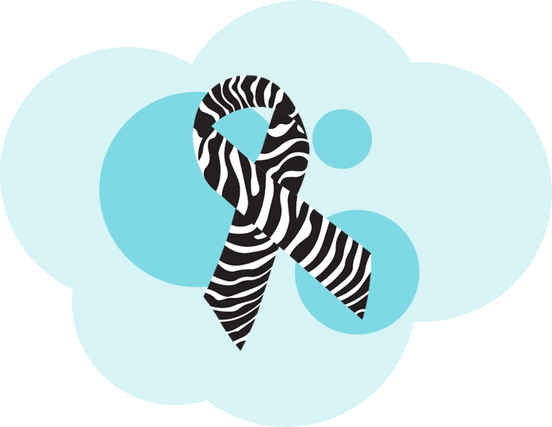Approximately 30 million people in the U.S. and 400 million people around the world are affected by a rare disease. But with more than 7,000 currently known rare diseases, correctly identifying one is often a long and arduous process. In fact, it typically takes a patient with a rare disease an average of six to eight years to receive an accurate diagnosis, according to rare-disease nonprofit Global Genes. And in some cases, “that can literally be a lifetime,” explains Global Genes’ CEO Craig Martin.
“Rare diseases are incredibly diverse, and many clinicians—and certainly most patients—have never had experience with a rare disease until it drops in their lap,” he says.
Until they receive a clear-cut diagnosis, patients with rare diseases grapple with mysterious symptoms that they’re not sure are related to each other. They don’t always know what questions to ask or which specialists to see. And without knowing the potential signs and symptoms of a rare disease, many patients and their caregivers—who are the principal observers of those symptoms—may not effectively communicate the right details to clinicians. Those patient-provider communication gaps further delay a timely diagnosis, Martin says.
However, empowering and engaging patients at the point of care with educational content and resources can help to fill those gaps. Here are three ways that point-of-care education can help expedite rare-disease diagnoses.
1. Tackle lack of awareness and understanding
For patients with rare diseases, awareness, or the lack thereof, is the biggest barrier to receiving an accurate, timely diagnosis, says Julie Cosgrove, Director of Marketing at Alnylam Pharmaceuticals.
“No doctor can be expected to really know and understand more than 7,000 rare diseases, which often present with very nonspecific symptoms or symptoms that might be attributed to more common conditions,” she explains.
But providing patients with information about rare diseases just before they meet with their provider may help them recognize that their symptoms align with a rare disease—and raise that possibility with their doctor during their appointment. From there, doctors can explore testing options that can bring them closer to a diagnosis.
“When someone has a rare disease, they often go to many different doctors looking for answers and have symptoms that don’t seem to be explainable or treatable with standard treatment,” Cosgrove says. “Having that information can remind a patient to ask the doctor to consider a rare disease.”
2. Align patients and care teams
The point of care is also a great place to offer patients such resources as provider discussion guides and genetic-testing toolkits that can help get doctors and patients on the same page. That mutual understanding can be especially important for rare-disease patients, who often see multiple specialists across different health systems, Martin says.
“The information that [patients] come into each conversation with may be varied, either because their health records may not be complete when they go from one place to another, or they may have been managing information in a scattered way for years,” he explains.
Productive conversations with providers are crucial in order for patients to make progress in their care journey. With rare diseases, there can be a disconnect between how patients describe what they’re feeling and how doctors typically discuss diseases, Cosgrove says.
“Often, what we try to do in our disease-awareness education is to align what the doctor is hearing with what the patient is saying so that they’re using a common vocabulary to talk about symptoms,” she says. Point-of-care education “can help put those right words in [patients’] minds to help them have that intelligent and impactful conversation with the doctor.”
3. Empower patients and validate their experiences
The point of care is a patient-centric medium that, when put to its optimal use, can help validate patients’ lived experiences. And that’s particularly important for underrepresented patient populations who haven’t historically felt validated by the healthcare community.
Rare diseases already carry stigma and misunderstanding, Cosgrove says. Providers may not take patient complaints seriously if they can’t see the impact of a disease from test results or on an MRI. When such diagnostic challenges are layered on top of the challenges already faced by underserved populations, patients in these groups may not have the support network they need to continue asking questions and fighting for answers about their rare condition.
Point-of-care messaging, particularly when it’s targeted, can help patients feel seen and empower them to continue searching for a diagnosis. And that’s critical, especially in vulnerable populations where health inequities—such as poor access to clinical trials—already contribute to diagnosis and treatment delays. And that’s one condition Global Genes is working to fix.
“Thinking about [health equity], who’s getting left out, and how to include them is a natural reflex for many in our community because most rare disease families know what it’s like to feel isolated and alone, and they don’t want others to feel that way,” Martin says.
Find out how Phreesia can help you engage with and activate rare disease patients at critical moments in their healthcare journey.
Activate patients in the moments that matter
Phreesia can bring your message to the right patients and empower them to participate in their treatment decisions


